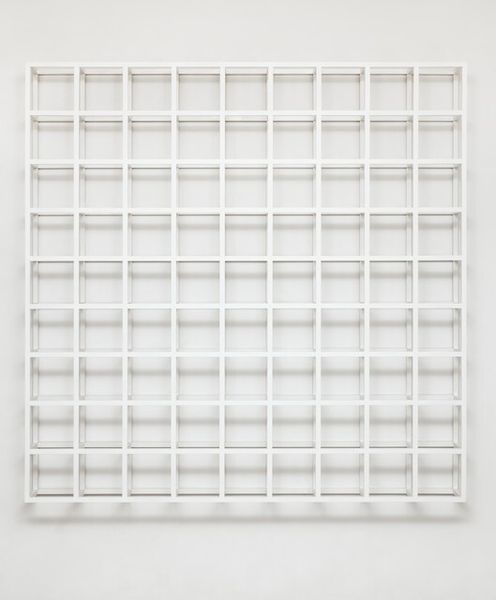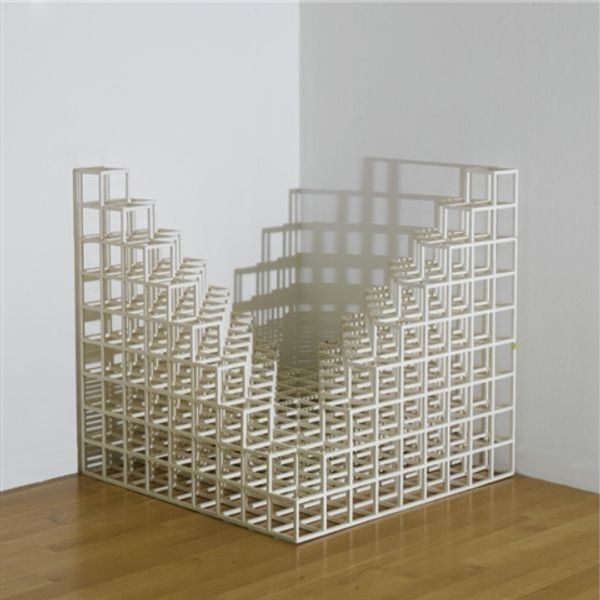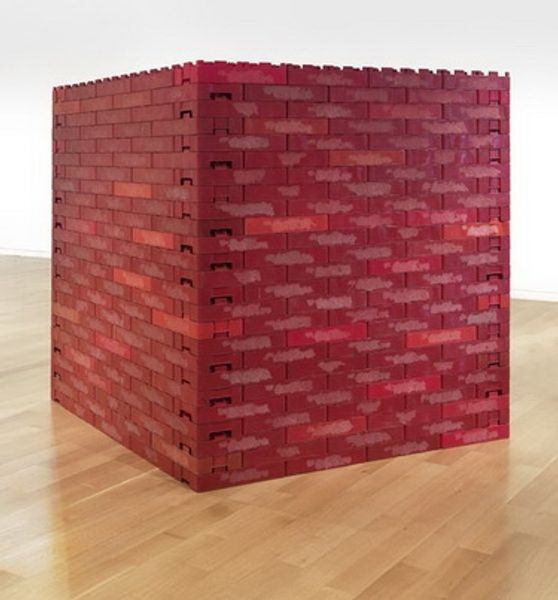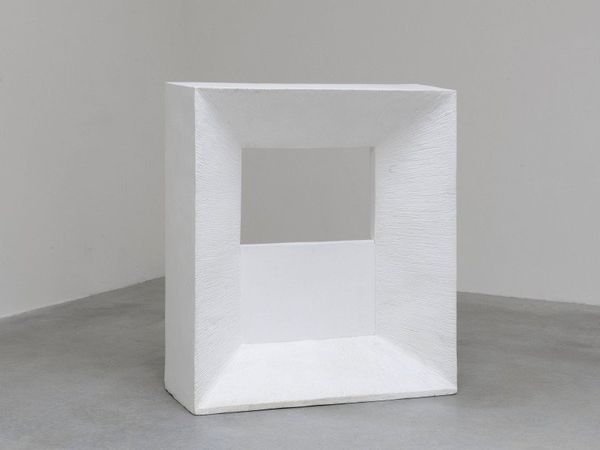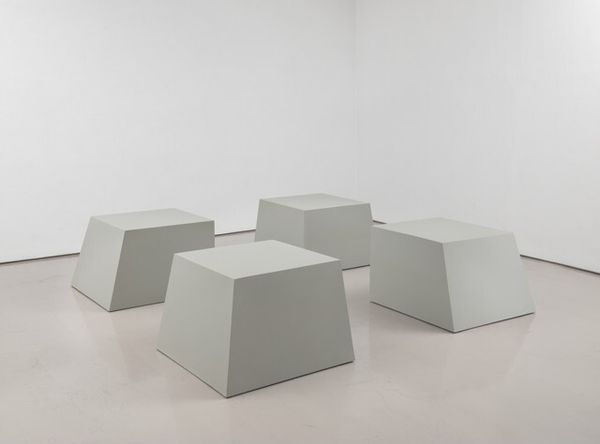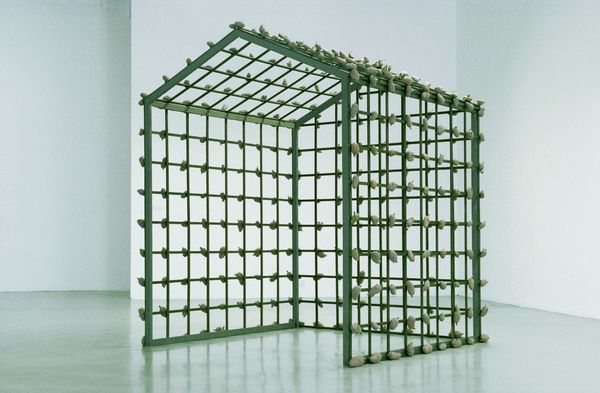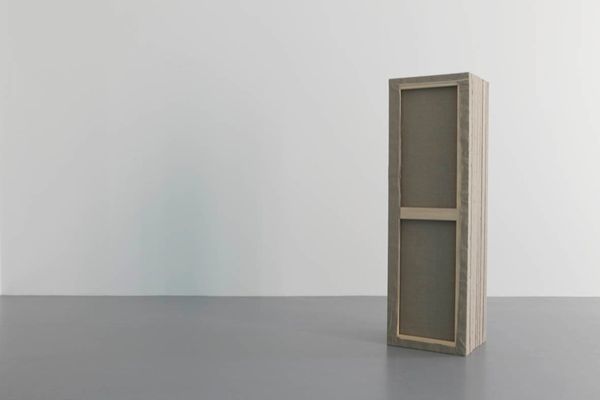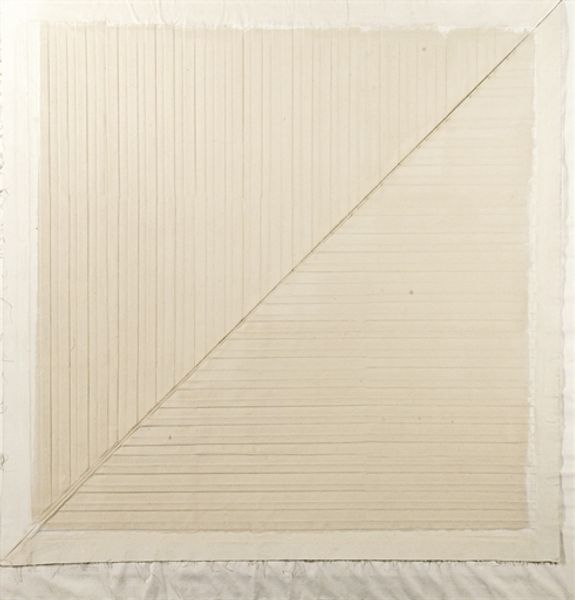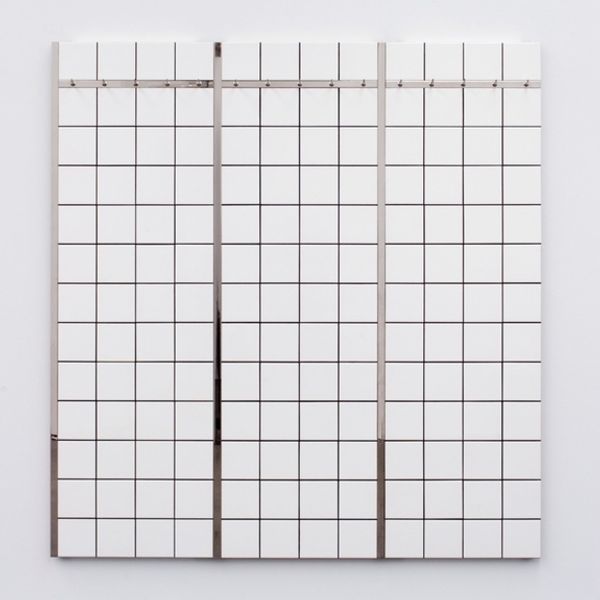
sculpture, installation-art, wood
#
conceptual-art
#
minimalism
#
geometric pattern
#
geometric
#
sculpture
#
installation-art
#
wood
Copyright: Sol LeWitt,Fair Use
Curator: It looks like some kind of ethereal fortress, doesn't it? A lattice of geometric forms both dense and somehow weightless at the same time. Editor: Absolutely. What we're looking at is Sol LeWitt's "Corner Piece No. 2" created in 1976. As you can see, it is a sculpture made of painted wood and designed to fit snugly into a corner. It’s a prime example of both Conceptual and Minimalist art. Curator: The use of the corner is so potent. Corners represent confinement, a turning point, where edges meet and realities shift. This piece feels like an attempt to break free from spatial constraints. It’s architectural, almost like a blueprint for utopian living, yet rigidly controlled. Editor: Yes, the grid structure dominating much of LeWitt's output carries significant historical weight. Grids are linked with modernism's pursuit of order, rationalization, and control, influencing city planning to data organization. Its seemingly neutral format often masks underlying power structures. The question is, do the repeated geometric forms convey something more sinister or purely convey a quest for aesthetic and structural clarity? Curator: Maybe the simplicity is deceiving? I see layers. At first glance it presents rigid geometry. However, on closer examination the repeated shapes hint at the instability inherent to any utopian aspiration. Are we meant to interpret those repeated cuboid structures as a foundation being formed or being eroded away by relentless repetition? Editor: It might well be the former! Sol LeWitt described conceptual art as idea-based and sought to separate the art from the artist’s hand. So, the focus shifts away from aesthetic or subjective content toward rational and systematic constructs. As a piece it questions our preconceived notions around visual representation. Curator: Its visual motifs of transparency and repetition remind me how codes, biases, and power dynamics shape the realities of those positioned both inside and outside the social structure. I keep returning to the notion of breaking down and building back up the same basic unit again, and again. Editor: It presents complex symbolism through seemingly simple forms. LeWitt’s piece makes us question the role that order, pattern, and visual codes have on culture. I like that! Curator: Absolutely. It has definitely shifted my perception today. Thank you.
Comments
No comments
Be the first to comment and join the conversation on the ultimate creative platform.
